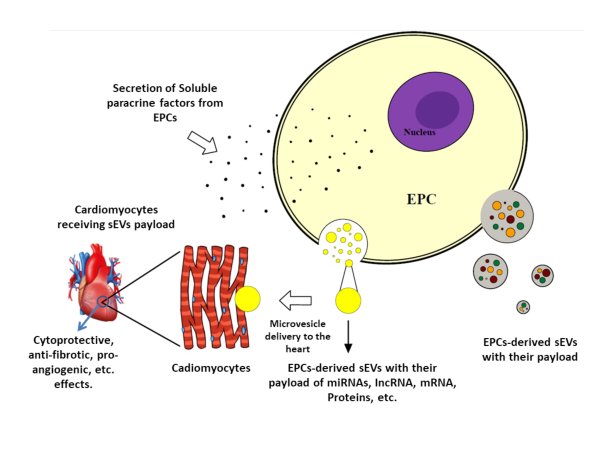-
Home
-
About JCTR
-
Gold Open Access
-
Issues
-
Editorial board
-
Author guidelines
-
Publication fees
-
Online first
-
Special issues
-
News
-
Publication ethics
-
Partners
-
Submit your manuscript
-
Submit your review report
-
Editorial Office
-

This work is licensed under a Creative Commons Attribution-NonCommercial 4.0 International License. ISSN print: 2382-6533 ISSN online: 2424-810X
Volume 8 Issue 6
Endothelial progenitor cell-derived small extracellular vesicles for Myocardial angiogenesis and revascularization
Maher T. AlOmar†, Mahmoud T. Alnajjar†, Ziyad T. Ahmed†, Faris MI Salaas, Tamim SM Alrefaei, Khawaja H Haider*
AlOmar et al. J Clin Transl Res 2022; 8(6):4
Published online: October 31, 2022
Abstract
Background: Endothelial progenitor cells (EPCs) have been well-studied for their differentiation potential and paracrine activity in vitro and in experimental animal studies. EPCs are the precursors of endothelial cells (ECs) and a rich source of proangiogenic factors, and hence, possess enormous potential to treat ischemic heart via myocardial angiogenesis. Their proven safety and efficacy observed during the pre-clinical and clinical studies have portrayed them as a near-ideal cell type for cell-based therapy of ischemic heart disease. In response to the chemical cues from the ischemic heart, EPCs from the bone marrow and peripheral circulation home-in to the ischemic myocardium and participate in the intrinsic repair process at the molecular and cellular levels via paracrine activity and by undergoing EC differentiation. EPCs also release small extracellular vesicles (sEVs) loaded with bioactive molecules as part of their paracrine activity for intercellular communication to participate in the reparative process in the heart.
Aim: This literature review is based on the published data regarding the characteristic features of EPCs-derived sEVs and their proteomic and genomic payload, besides facilitating safe and effective repair of the ischemic myocardium. In light of the encouraging published data, translational and clinical assessment of EPCs-derived sEVs is warranted. We report the recent experimental animal studies and their findings using EPCs-derived sEVs on cardiac angiogenesis and preservation of cardiac function.
Relevance for patients: With the promising results from preclinical studies, clinical trials should be conducted to assess the clinical utility of EPCs-derived sEVs in the treatment of the ischemic myocardium.
†These authors have contributed equally to this work.

DOI: http://dx.doi.org/10.18053/jctres.08.202206.004
Author affiliation
College of Medicine, Sulaiman Al Rajhi University, Al-Bukairyah 52726, Saudi Arabia
*Corresponding author
Khawaja H Haider
College of Medicine, Sulaiman Al Rajhi University, Al-Bukairyah 52726, Saudi Arabia
Email: kh.haider@sr.edu.sa
Handling editor:
Michal Heger
Department of Pharmaceutics, Utrecht University, the Netherlands
Department of Pharmaceutics, Jiaxing University Medical College, Zhejiang, China

